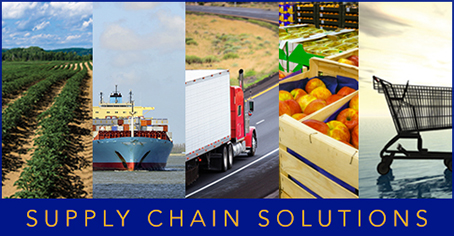Remember that classic fairy tale Goldilocks and the Three Bears? In the story, Goldilocks wanders into the Bear family’s house in search of food that was not too hot and not too cold and a bed that was not too hard and not too soft. It was all about getting things just right, which is a perfect analogy for supply chain professionals who must manage fresh produce inventory levels.
Achieving the optimal Goldilocks level of inventory requires you to strike a balance between supply and demand. In this fairy tale supply chain, there is just enough inventory to satisfy demand with no extra product and no waste. Every customer gets the quantity and grade of product desired.
In real-life fresh produce supply chains, supply shortages and overages occur frequently. When there’s a shortage of supply, you can’t meet demand at a reasonable cost and may lose customers. When there’s a supply overage, you can’t sell product at a reasonable profit and face the risk of spoilage. Either situation leaves someone unhappy.
Given the financial implications of supply-demand imbalances, it is imperative to understand why imbalances occur and what you can do about them. It is not an easy task because fresh produce supply and demand levels are dynamic. You need both proactive and responsive strategies to get those inventories just right.
Why Imbalances Occur
Balancing supply and demand is difficult in any industry. Supply chain risks such as late deliveries and defective products are a reality. External demand influencing factors, including economic conditions and employment rates, fluctuate over time. And, demand patterns are not always stable. Collectively, these issues make it challenging to forecast and meet customers’ inventory requirements.
Unlike a factory that can quickly adjust production line speed to match demand with consistently high quality output, it is not easy to synchronize produce and changing customer requirements. Lead times to grow, harvest, and deliver vary in length and by commodity. Yields are not guaranteed and product quality is tied to growing conditions. Collectively, these issues make it difficult for suppliers to know how much inventory will be available to fulfill demand.
Forecasting Supply
Predicting and producing supply is not an exact science; what is good for increasing the supply of one crop may be detrimental to another, notes Ryan Fernandez, supply chain director for Sun Rich Fresh Foods, a processor and importer in Brampton, Ontario. “We grow many products very close to each other but they react in different ways,” Fernandez notes. “A random day of freeze can be really good for some crops but damaging for others. The rains in California made many growers happy, but the grape growers have to worry about mold.”
Understanding downstream demand isn’t much easier. Seasonal demand is a challenge, especially for commodities with highly concentrated consumption.



